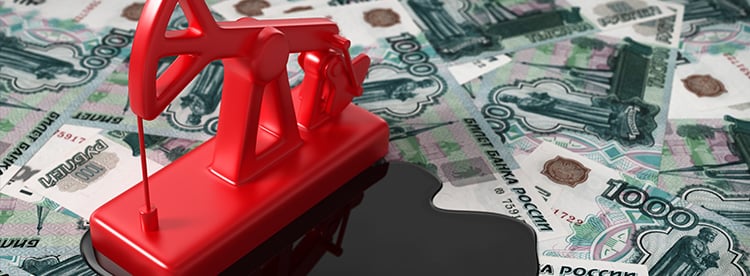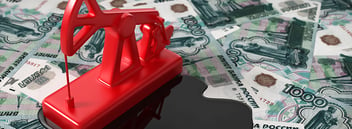A catastrophe is threatening to unfold in Russia. The country is hit hard by the corona outbreak, while the crash of the oil price is creating a huge dent in the budget. Russians, however, are much more accustomed to catastrophe than those of us in the Western world.
Russia is being hit hard by the coronavirus. The number of infections is probably much higher than the official figure of around 25,000. The same applies to the number of victims, which is reported to be 198. International newspapers cite anonymous sources in Moscow hospitals, speaking of a large-scale shortage of medical equipment. Moreover, doctors would often proclaim pneumonia as the cause of death in an endeavour to keep anxiety with regard to COVID-19 at bay. Moreover, the indirect damage caused by all of this is much greater for Russia than for most other countries. As a result of the sharply lower oil price, government revenues are suffering a shortfall of tens of billions of dollars this year.
Interest rate to 17%
This is not the first time that Russia has had to deal with collapsing oil prices. In the second half of 2014, the price for a barrel of Brent oil fell from almost $110 to over $50. The demand for roubles – the currency in which Russian oil is traded – dropped steeply on the forex market. In just over six months, the value of this currency fell by nearly 3 to less than 1.5 dollar cents. In the end, the central bank had to raise the Russian interest rate from 7.5% to 17% to prevent the rouble from becoming completely worthless. Interest rate hikes are a tried and tested method for giving a particular currency a boost. After all, wouldn’t you consider switching to another bank if the savings interest rate offered there is a few per cent higher?
Russia has learned its lesson
Since the turn of the year, the price of a barrel of Brent oil has once again dropped by more than half. However, this time the central bank does not have the luxury of facilitating a significant increase in the interest rates. Inflation in Russia has already fallen well below the target level of 4%. In addition, a rise in interest rates could be a final blow to the economy, which has already undergone severe damage due to the pandemic. There is therefore a good chance that Chairwoman Elvira Nabiullina will announce a new interest rate cut at the central bank meeting on 24 April. Still, the question is whether the rouble can expect yet another blow. Russia was forced to learn a lot of lessons from the previous crisis.
Stubborn rate pays off
The previous oil crisis coincided with the introduction of all manner of international sanctions against Russia – for the annexation of Crimea, for example. Since then, Russia has been aiming to reduce its dependency on the outside world to the greatest extent possible. Only 10% of all food is imported today, in comparison to 25% in 2014. Companies have repaid international debts at lightning speed. In addition, the government has built up a reserve of over 100 billion dollars. Thanks to Russia’s isolated nature, the blow to international trade due to the pandemic is much less severe than that to an open economy like that of the Netherlands. That does not alter the fact that the virus is equally catastrophic for Russia. One difference is that the Russians are much more accustomed to catastrophe than those of us in the Western world. And the lessons they have learned now ensure that the rouble will not fall as rapidly as you would expect.
Joost Derks is a currency specialist at iBanFirst. He has over twenty years of experience in the forex world. This column reflects his personal opinion and is not intended as professional investment advice.
Topics






